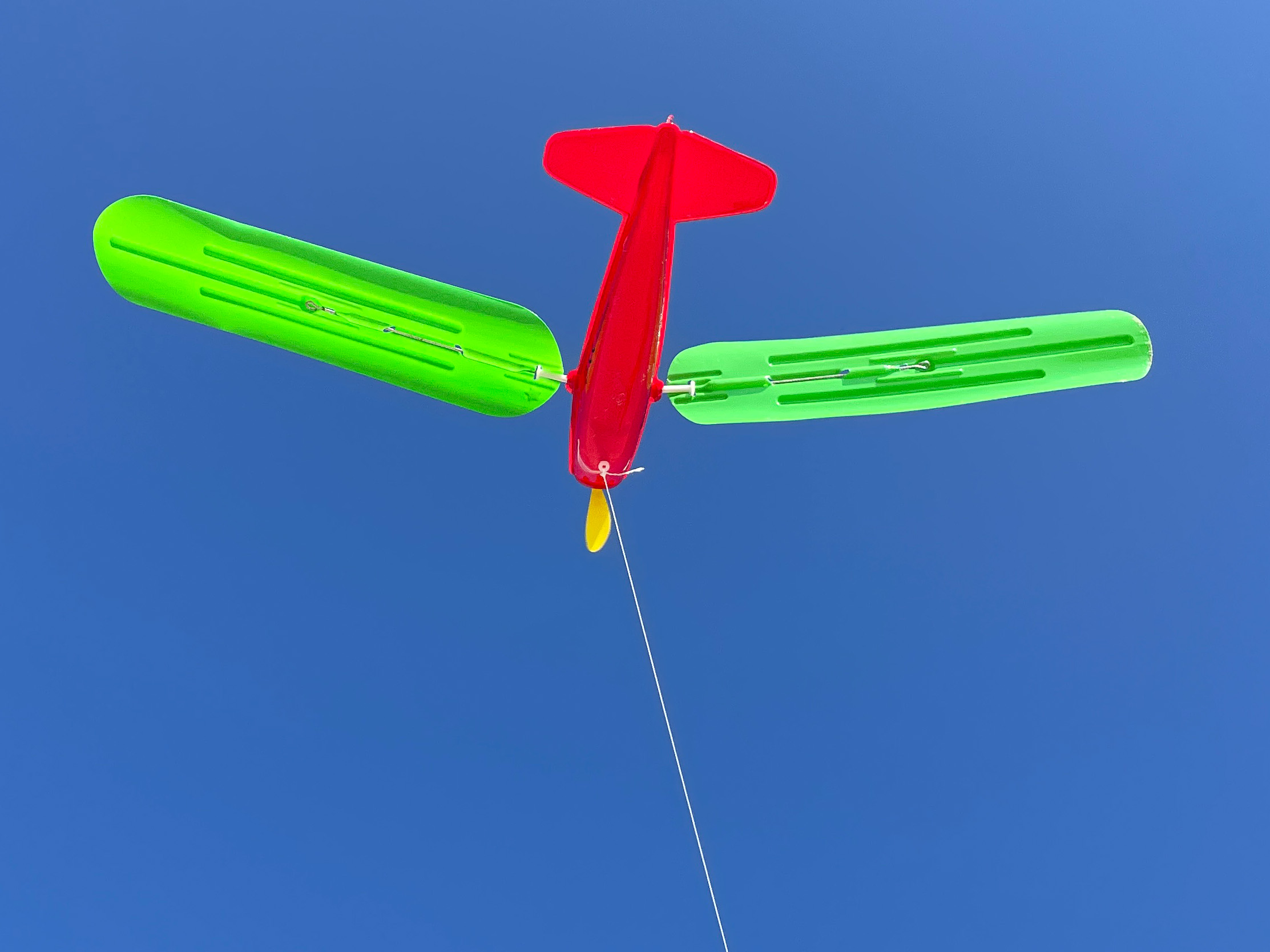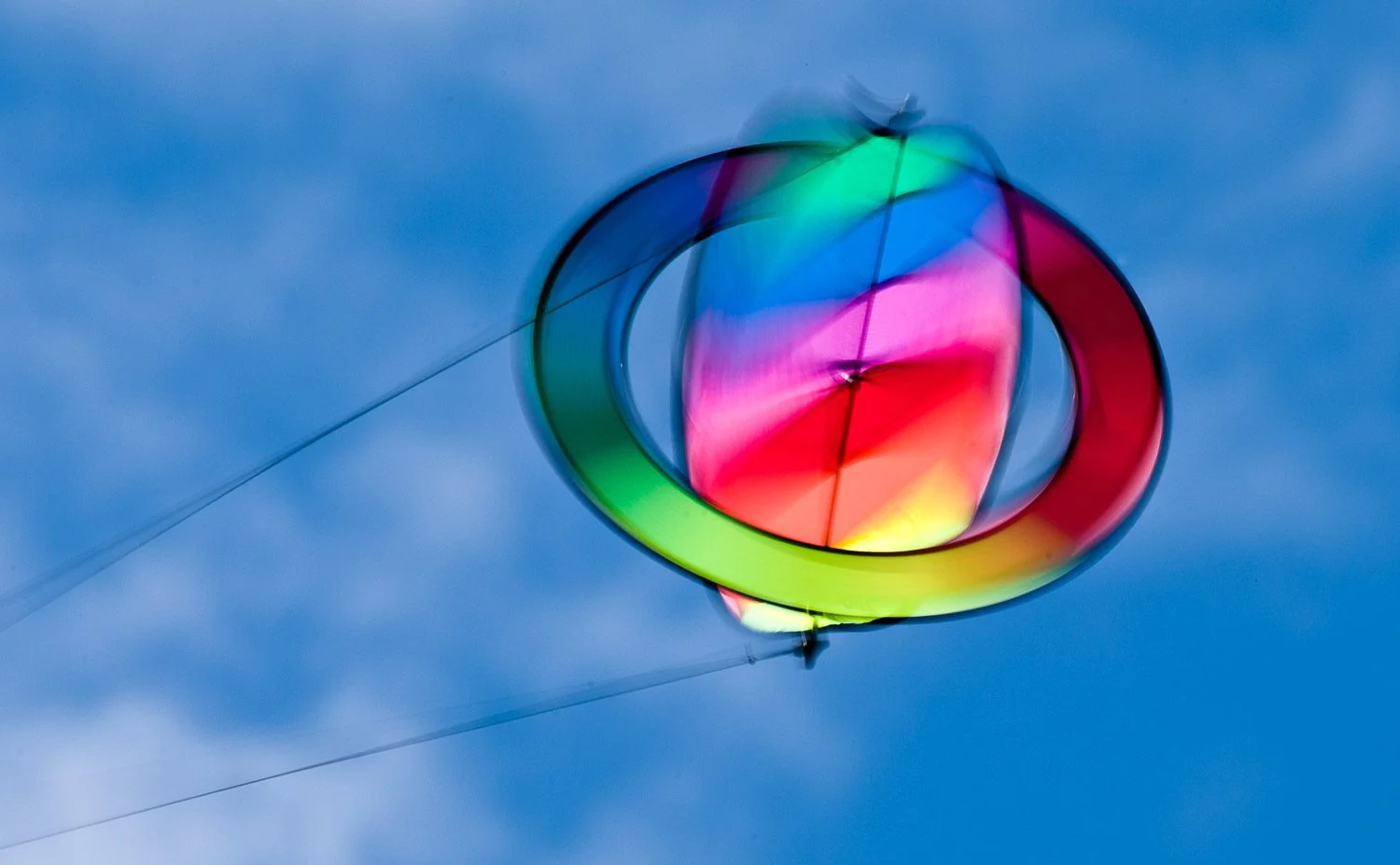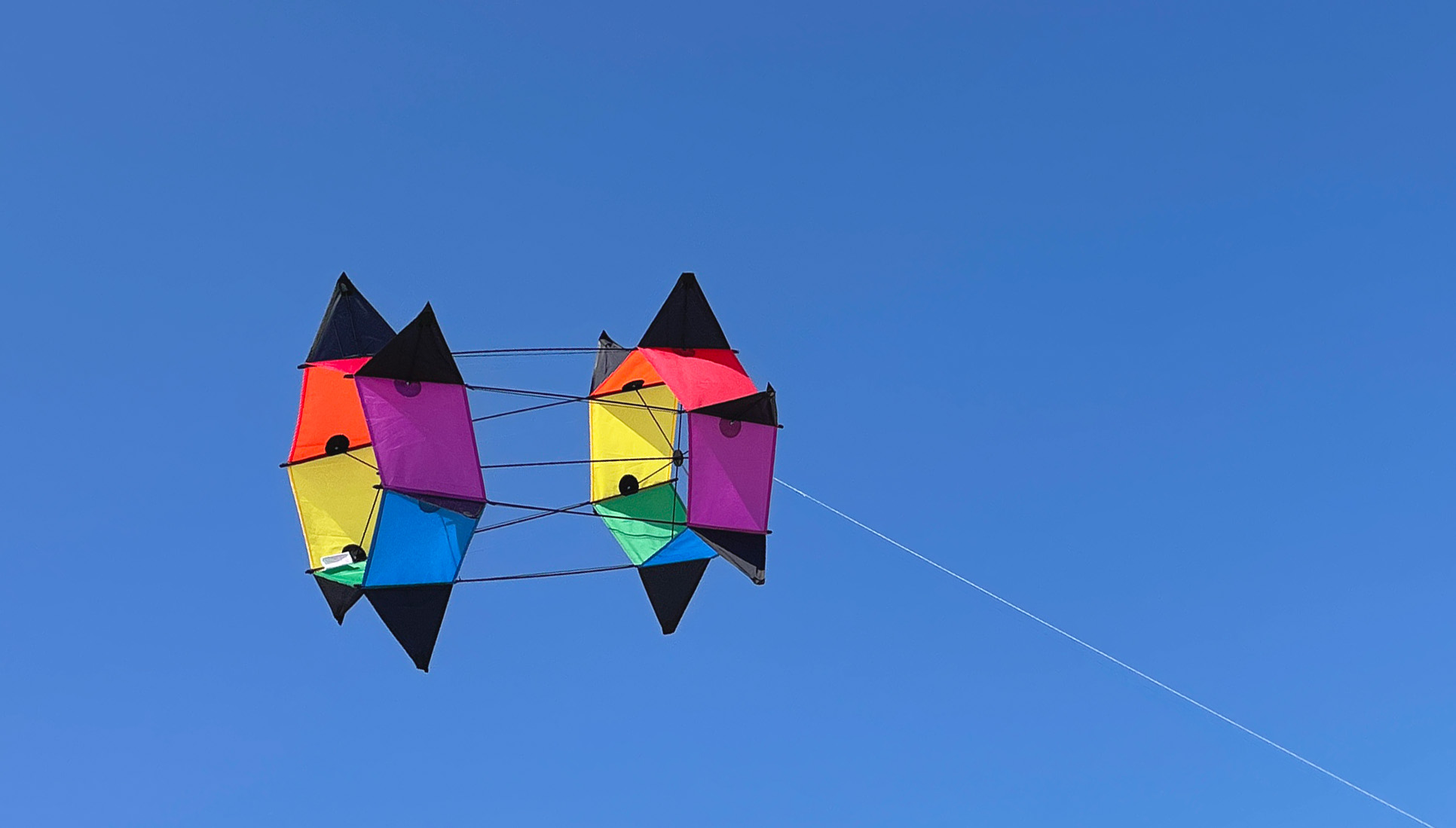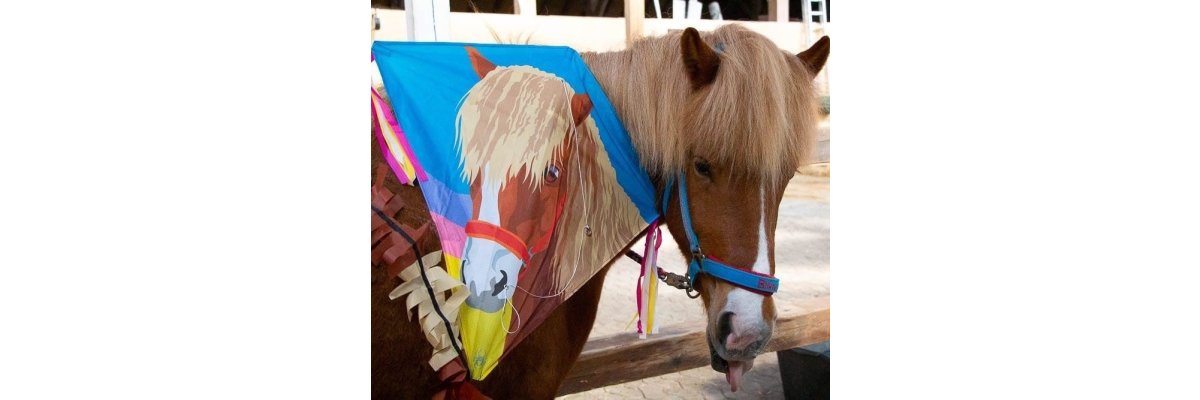Rotating objects are not unknown in the kite sky. Usually attached to a towing kite as a line decoration, they please the eye of the beholder with their movement and their variety of shapes and colors.
Here and today, however, I want to talk about kites that turn and therefore (or nevertheless?) fly on their own. I took the time to have a closer look at three very different models and of course to fly them in great length.
But - why do they fly at all? It's surprising, but as always there is a scientific explanation: At least two of the three tested kites fly according to the principle that makes a banana flank fly a killer - well - banana curve, or leaves the opponent baffled with a cleanly cut topspin in table tennis - the Magnus effect. Other great things can be done with the Magnus effect, from wind-powered roof motors for transporters, to wind turbines that are completely independent of wind direction, to modern sail propulsion for ships. https://www.norsepower.com
But before it gets too technical, I'd rather refer to the corresponding Wikipedia articles:
https://de.wikipedia.org/wiki/Magnus-Effekt
https://de.wikipedia.org/wiki/Anton_Flettner
https://de.wikipedia.org/wiki/Savonius-Rotor
The test models:
Turboprop by Günther Flugspiele
Flip by Prism Designs
Roto from HQ-Kites
I looked into the design, assembly, and flight characteristics of each.
The Turboprop is an airplane type of kite with rotating wings. It has been built and sold virtually unchanged for over 50 years. In the course of its life, the Turboprop has been given an additional propeller at the nose - and that's it as far as facelifts are concerned. Since this year, it is again being produced entirely in Germany. Without exaggeration, it can be said that the Turboprop is one of the best-selling kites in post-war history. This little plane has fascinated many generations of children.

It is built from colorful, very light, deep-drawn plastic and a bit of bent wire. The parts, packed in a flat cardboard box, are quickly put together - pay attention to the correct assignment of the wings. Just tie on the flying line, and then off into the wind. The Turboprop always needs a little moment until the wings turn fast enough for it to rise into the air. After that, it is the ideal companion for a great day at the beach: It hardly develops any traction, meaning it can also be flown by smaller children. It is very stable even in stronger winds and always draws attention to itself with a sounding rattle. Its line angle is rather low. In the newest generation, the line is finally tied to the lower end of the reel - a small sensation! As I can report from my own (multiple) experience, there is little that hurts as much as a turboprop flying off into the horizon.
The Turboprop is the smallest and cheapest kite in this test. Good for the vacation budget, but unfortunately the deep-drawn plastic parts are quite fragile and only rarely has a Turboprop survived the summer. It's almost impossible to repair.
Pros:
low price
good flight characteristics
child friendly
Cons:
short life span
low angle of the line
Flip from Prism is a different story. The construction is made of strong polyester fabric and fiberglass. It is held together by small but sturdy plastic connectors. The Flip comes virtually unpackaged - a cardboard banderole is used for presentation in the store, but there is no bag for later storage. That's a pity, because the Flip brings enough substance for a longer life.

There is virtually nothing to set up. Just twist the ring so that it is at 90 degrees to the elliptical disc, knot the flying line to the bridle and - wait for the right wind. After all, it needs a good breeze until it rotates fast enough to rise into the skies. Then it stands stable in the sky, with a somewhat steeper line angle than the turboprop. Unlike the turboprop, the "wing" of the Flip is not profiled. As a result, the flight is always a bit bumpy, which is noticeable by a constant twitching in the flying line. One has to live with this...
The Flip is, as known from Prism, neatly manufactured. Due to its special shape, it has the highest degree of coolness of the three candidates.
Pros:
good workmanship
good flight characteristics
Cons:
Twitching in the line
Needs strong wind
HQ's Roto is the only kite in the test that does not fly by the Magnus effect. It is a classic, six-edged box kite with small, triangular wings that are slightly angled and cause the kite to rotate around its vertical axis as soon as it gets airborne. The Roto, like the Flip, is very nicely built with polyester cloth and fiberglass rods. Small plastic connectors are used to connect the wings to the center vertical rod. The rotation of the Roto runs like clockwork due to a small, ball-bearing mounted swivel in the central rod - very nice! It is packed in a simple, practical bag.

The assembly is rather tedious. Each wing is mounted separately, so it's important to keep track of everything.
Launch and flight of the Roto is a piece of cake. Simply launch from the hand and give line. If the wind is strong enough, the kite turns immediately and takes the steepest line angle of all three kites. The turn is unhurried by comparison and easy to follow. The steady pull is light.
Pros:
good workmanship
very good flight characteristics
Easy to launch
Cons:
tedious assembly>
relatively expensive
Now - Which of the three test candidates flies best? Definitely the Roto. The largest and most expensive kite in the field is impressive in every respect. But the Turboprop and the Flip have their special charms, too. Nostalgia potential, child-friendliness, easy assembly and collness factor are of course not to be underestimated. And if the price is right, that's all the better, of course.
Christoph Fokken




